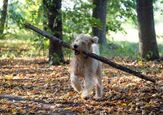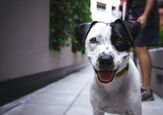There’s a silent epidemic quietly impacting countless cats across the United States and throughout the world: pet obesity. It’s a condition that, while seemingly harmless at first glance, can seriously impact your cat’s quality of life and shorten their precious time by your side.If you’re reading this, it’s because you’ve noticed your cat is carrying a few extra pounds as of late, and you’re concerned about the possible impact on their health and well-being. This post will help you understand why your cat’s weight matters, the tangible steps you can take to help them reach a healthy weight, and when to bring your veterinarian into the conversation.Why Your Cat’s Weight MattersIt’s easy to look at a chunky kitty and think they’re simply “cuddly” or “well-fed.” However, what might seem like a bit of extra cushion could also be a sign of a serious health concern. This isn’t just about aesthetics; it’s about a condition where your cat’s excess body weight could negatively impact their health and well-being.So, how can you tell if your cat is carrying too much weight?Beyond just the number on the scale, there are a few visual cues you can watch out for. Ideally, you should be able to feel your cat’s ribs when you gently run your hands along their side (although they should not be noticeably sticking out). Their waist should also be noticeable, tapering slightly behind the ribs when viewed from above.They might be overweight if you can’t feel their ribs or if your cat looks more like a furry loaf than a sleek cat. This is incredibly common, with the 2022 Association for Pet Obesity Prevention survey revealing that 61% of cats are overweight or obese.The Potential Health ProblemsThe consequences of carrying extra weight extend far beyond a less active lifestyle. Obesity can trigger, or significantly contribute to, many serious health problems. Experts warn that this additional weight could impact nearly every system in your cat’s body!DiabetesJust like in humans, obesity in cats significantly increases their risk of developing diabetes. Excess body fat can make a cat’s cells resistant to insulin, the key hormone needed to regulate blood sugar. This means their body struggles to use sugar for energy, leading to high blood sugar levels.If your cat is suffering from diabetes, you may notice they are drinking more, urinating more frequently, eating more, or even losing muscle mass despite eating. More severe cases of diabetes will require lifelong insulin injections to regulate your cat’s blood sugar. If left unmanaged, diabetes can lead to severe and potentially life-threatening complications.OsteoarthritisImagine carrying a heavy backpack all day, every day. That’s essentially what an overweight cat’s joints experience. This excess weight puts immense strain on their bones, joints, and cartilage, leading to inflammation, pain, and the development of osteoarthritis. This can make it painful to jump, climb, or even walk.Signs of arthritis in cats include:Reluctance to moveDifficulty getting up or lying downReduced activity levelsStiffnessSubtle limpThis pain can significantly reduce your cat’s comfort and overall quality of life.Feline Lower Urinary Tract Disease or Other Urinary IssuesOverweight cats are more likely to develop uncomfortable and potentially dangerous urinary tract problems. Obesity can contribute to inflammation in the bladder, the formation of urinary stones, or even life-threatening blockages, most commonly seen in male cats. Signs to watch out for include straining to pee, frequent trips to the litter box with little or no result, accidents outside the litter box, or crying out in pain while attempting to go.Liver Disease (Hepatic Lipidosis or Fatty Liver Syndrome)This is a particularly serious and potentially life-threatening condition unique to cats, and overweight kitties are at a much higher risk. If an overweight cat suddenly stops eating for even a short period (due to stress, illness, or even an attempt to diet too quickly), their body starts to send its fat reserves to the liver much faster. The liver becomes overwhelmed and can’t process the fat efficiently, leading to liver failure. This is why any sudden loss of appetite, especially in an overweight cat, should be addressed with a vet appointment.Cardiovascular DiseaseCarrying extra weight means your cat’s heart has to work much harder to pump blood throughout their body. This heavy workload can lead to higher blood pressure and, over time, can lead to the development of serious heart conditions, diminishing their cardiovascular health, and potentially shortening their lifespan.Respiratory Problems Just like humans, excess fat in cats can accumulate around their chest and abdomen, restricting the ability of their lungs to expand effectively. This can make breathing difficult, especially during activity or in warm temperatures. You might notice your cat snoring more, breathing heavily after minimal activity, or even showing signs of labored breathing. Reduced Quality of Life and LongevityBeyond specific diseases, an overweight cat is generally less active, less playful, and less able to engage in natural cat behaviors like grooming themselves thoroughly. They might struggle to reach certain areas, leading to matted fur, bald spots, and skin issues. You may not be surprised to hear that research consistently shows that cats who maintain a healthy weight live significantly longer, more comfortable, and more active lives than those who are overweight or obese. Anesthetic and Surgical Risks If your cat ever needs surgery or a dental procedure requiring anesthesia, their weight may pose additional risks. Excess fat can make it more challenging for vets to administer anesthesia safely and accurately, and it can increase the risk of complications during and after surgery due to altered drug metabolism and increased strain on the vital organs.

























